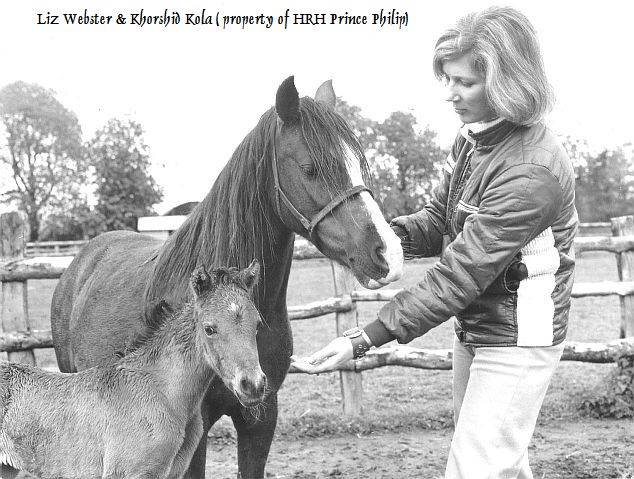Measures of genetic variation were near the average for domestic breeds with the Iranian sample slightly more variable. Caspian ponies had highest genetic similarity with other Arab type breeds and the two samples were more like each other than like any other
breed.
Genetic Studies of the Caspian Pony
Dr. E. Gus Cothran
Department of Veterinary Science , University of Kentucky, Lexington, KY, USA.
Genetic variation and genetic conservation of a rare
The Caspian Pony is a breed of horse known from archeological evidence but unknown outside Iran before 1965. between 1971 and 1978, 20 animals were exported to England to found a segment of the Caspian breed outside Iran. The small number of founders with little opportunity of new introductions leaves the Caspian breed at risk of loss of genetic variation and inbreeding. In this study we report analysis of genetic variation based upon seven blood group loci and 1 0 biochemical polymorphisms for 53 Caspian ponies from England and 19 from Iran. Measures of genetic variation were near the average for domestic breeds with the Iranian sample slightly more variable. Caspian ponies had highest genetic similarity with other Arab type breeds and the two samples were more like each other than like any other
breed. Analysis of pedigrees of the English sample did not reveal significant inbreeding. However, gene drop simulation analysis did indicate possible long term problems. Several founders were poorly represented in tile present day population and the risk of loss of the genetic contribution of many founders is high.
Genetic Studies of the Caspian Pony
We have now blood typed 72 Caspian Ponies, 53 from England and 19 from Iran.
We also have performed a detailed pedigree analysis of the English population. Here are the basic results of these analyses.
Genetic variability can be measured in two ways. First is the effective number of alleles (NE) which is a measure of gene diversity at the breed level. Average NE was 2.06 and 2.45 from the English and Iranian samples, respectively. The second measure is heterozygosity (H) which measures individual genetic variation. Mean H was 40.3% for the English sample and 41.8% for the Iranian sample. Both NE and H for the Iranian sample are near the average for domestic horse breeds. The values for the English herd are lower but not at a level that warrants concern . The lower variation of the English Caspians is probably a result of the small size of the founding population.
The genetic measures for the English caspians are in agreement with the calculations of inbreeding levels. As would be expected, there is an overall positive inbreeding level for the breed, which would lead to reduced genetic variation, but the inbreeding is not high. In addition, there has been no increase in inbreeding level in the last six years, up to the 1 990 foal crop.
Genetic marker analysis also can be used to estimate genetic relatedness. The two Caspian populations were more like each other than they were like any other breed. Overall, the Caspian had greatest similarity with Arab breeds. There are suggestion that the Caspian genetic makeup could be ancestral to that of the other Arab type breeds. However, it is not possible to determine whittier this is because the Caspians are in fact ancestral or because they have been interbred with other Arab breeds.
Finally, founder genetic contributions to the current population and the proportion of the remaining founder genome at risk of loss were estimated by pedigree analysis. In order to maximize the conservation of genetic variation in a closed population, such as the English Caspians, it is important to even up the genetic contribution of the founders. Six of the 20 founders account for 53.1 %of the current genetic variation. The remaining 14 founders contribute from 6.7 to less than 1% to the genetic makeup of the current population. The founders with a disproportionately high contribution are Ostad, Ruba, Jehan Afrouz, Daria Nour, Mitra and Khorshid Kola in order of % contribution. The founders with the lowest contribution are Felfel, Pouran Dokht, Alamara, Toloche, Shirine and Fatemeh. Special effort should be made to increase the genetic contribution of these six founders in order to help preserve genetic variation within the breed. This means that offspring or descendants of these horses should be preferentially bred, especially compared to the six founders with the highest genetic contribution. In some cases, this may be difficult or undesirable.

